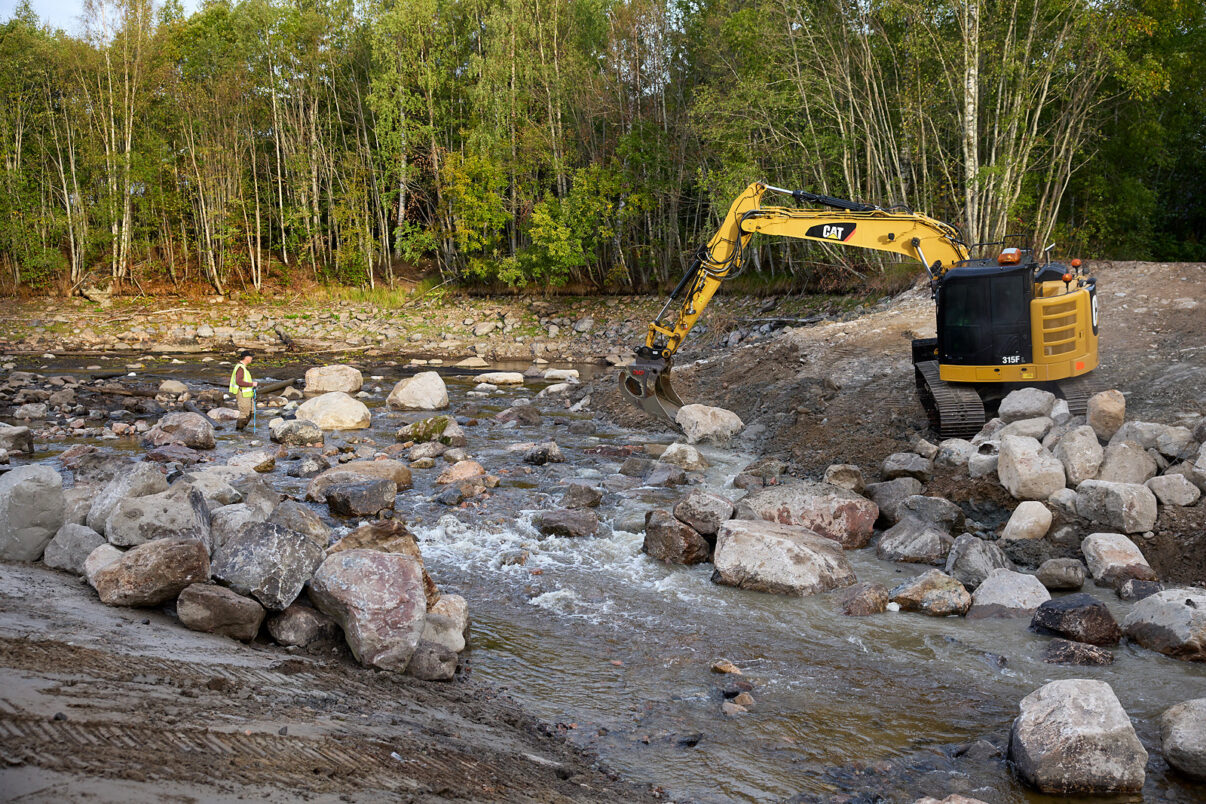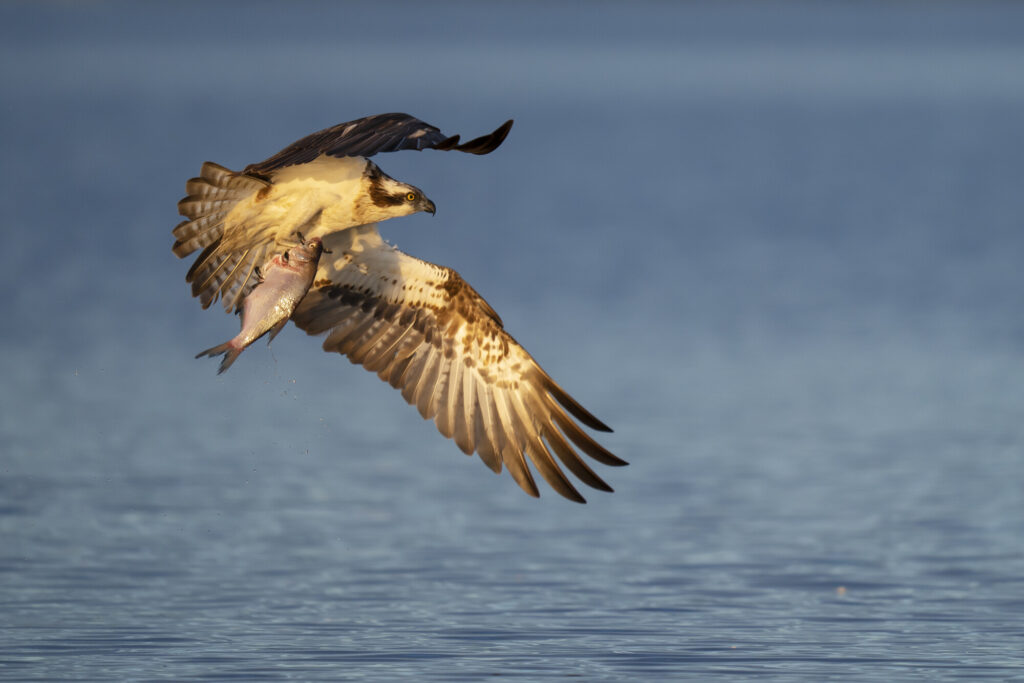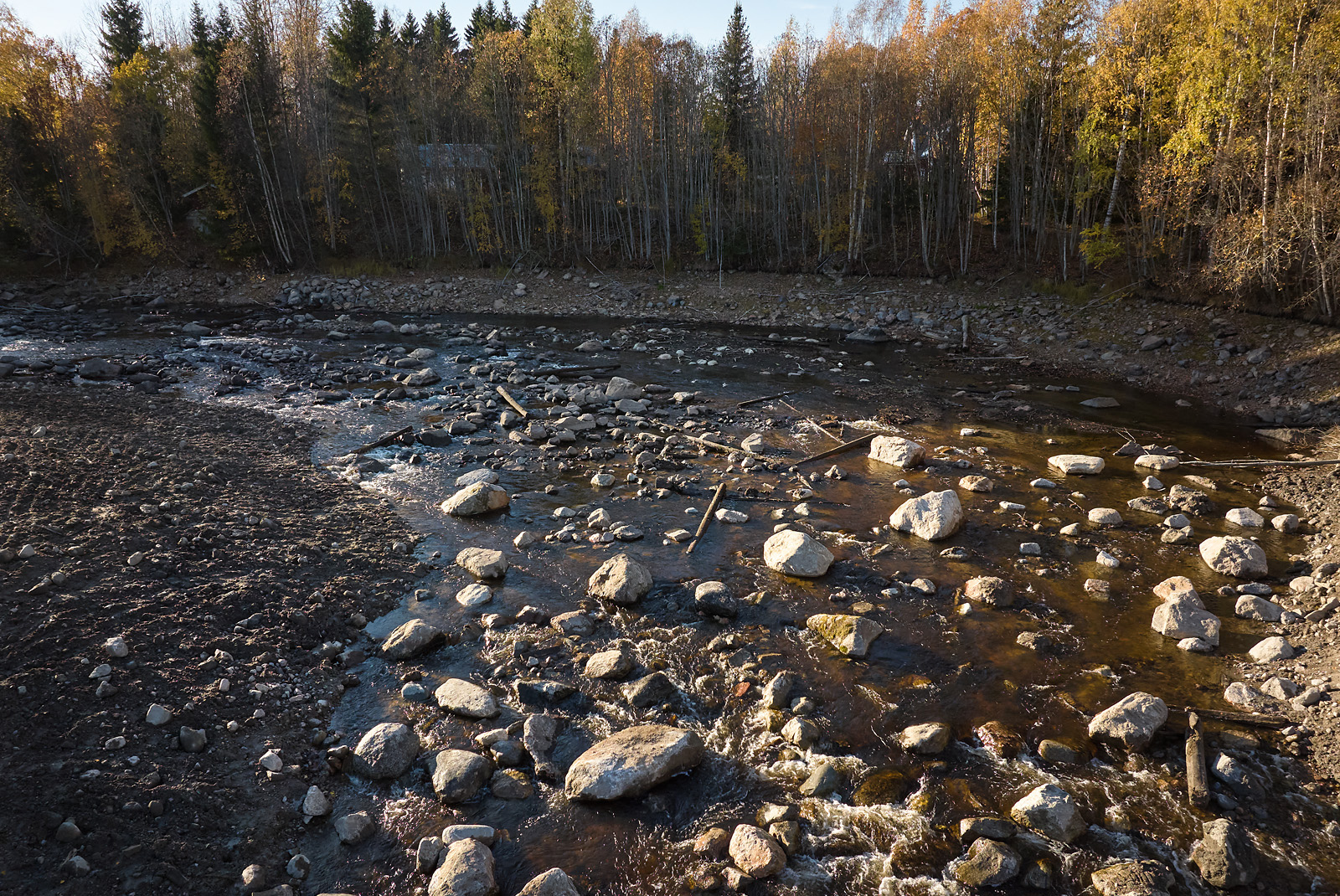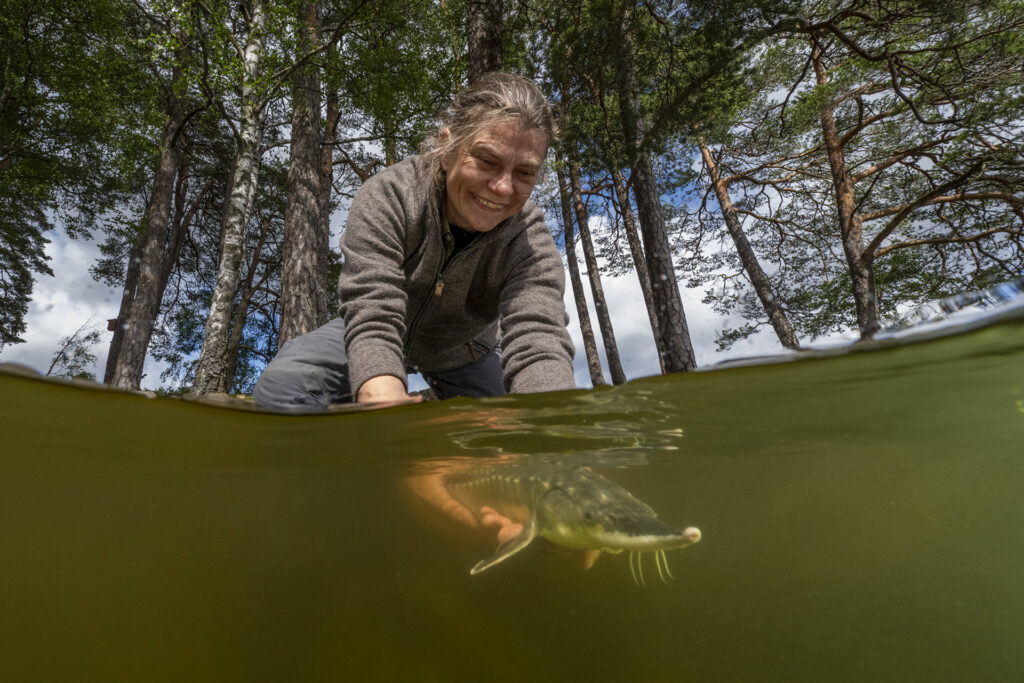A pioneering loan from Rewilding Europe Capital has enabled one of a series of dams on the Stångån River in central Sweden to be removed. The removal represents an important step towards realising the free flow of water in the river, benefitting a range of fish and other wildlife species.

Towards free-flowing water
A 100,000-euro interest-free loan from Rewilding Europe Capital – Rewilding Europe’s enterprise loan facility – has facilitated the removal of a dam on the River Stångån in central Sweden, south of the city of Sundsvall. The Ovansjö dam was one of four on the river that have been removed this year. A further four dams on the Stångån are scheduled for demolition in 2025 and 2026, which will free up 30 kilometres of waterway, enhancing fish migration and improving the overall health of the riverine ecosystem.
“We want to remove all the barriers on the Stångån so that water can flow naturally, habitats are connected, and fish can migrate freely and reproduce,” says Joel Norlin, who is managing the dam removal process as deputy general secretary of the Swedish Anglers Association (Sportsfiskarna), which received the loan. “We know that powerful measures are needed if we are to get fish back in our waters and seas.”

The negative impact of barriers
Artificial barriers such as dams are considered one of the main threats to aquatic and riparian biodiversity on a global scale. They significantly degrade river ecosystems by causing habitat loss and fragmentation, altering the distribution of sediments and nutrients, and concentrating pollutants.
The obsolete dams on the 30-kilometre River Stångån are a legacy of historic hydropower projects, with Sportsfiskarna purchasing an old power plant in order to remove the dam at Ovansjö. A series of dams had blocked the natural flow of water at the site for around 500 years – the dam that has just been removed was built in the 1930s and renovated in the 1970s. The health of the larger River Ljungan, which the Stångån flows into, is also negatively impacted by hydropower infrastructure.
The Ovansjö dam, which was constructed of concrete and soil, was removed between June and October with the help of a large excavator. Boulders and stones at the site were then used to reconstruct a natural course for the river.


Immediate impact
Restoration efforts on the Stångån have already begun to have a beneficial impact, with juvenile salmon observed in the river upstream of the lowermost dam that was removed. These fish have swum upstream from the River Ljungan.
“Dams on the Stångån have stopped all fish species from migrating for hundreds of years,” says Joel Norlin. “The most important target species of our dam removal work is the sea trout, but river lampreys, eels, and salmon will also benefit. In addition to fish, the restoration of the river will have a positive impact on a wide range of other wildlife, such as white-throated dippers, otters, and freshwater pearl mussels.”

The bigger picture
Rivers deliver a wide range of essential benefits to people and nature. With climate change bringing new challenges, we urgently need a new relationship with water – accepting it into our landscapes again, and rewilding it where we can. This means giving rivers the space and freedom to manage themselves, with dynamic, natural processes such as the free flow of water and flooding returning them to health.
Today, the European dam removal movement is developing rapidly, with a remarkable 487 barriers removed across 15 European countries in 2023. Rewilding Europe has been part of the European movement for free-flowing rivers for many years, as a founding partner of Dam Removal Europe. Riverine barriers have recently been removed by our landscape teams on the Giovenco River in the Central Apennines in Italy, and in the catchment of the Vindel River, in Swedish Lapland. Further dam removals are in the pipeline across our landscapes.

A pioneering loan
Rewilding Europe Capital provides commercial loans, complemented by business development advice, to companies located in and around Rewilding Europe’s portfolio of rewilding landscapes, as well as other compelling European rewilding business initiatives. The goal is to amplify rewilding impact, support the development of nature-based economies, and innovate new ways of doing new business that are good for nature and good for people too.
The loan to Sportsfiskarna represents the first time Rewilding Europe Capital has financially supported a dam removal initiative. The aim was to pilot a revolving fund for dam removal, where a loan is provided to bridge a finance gap, and is then repaid when the dam is removed and the work completed. Sportsfiskarna will repay the loan based on compensation provided by Sweden’s Hydroelectric Environmental Fund.
“Removing dams is one of the quickest and most cost-effective ways of restoring rivers to health, and I was very happy that Rewilding Europe Capital was able to support Sportsfiskarna,” says Rewilding Europe’s Conservation Finance Expert, Daniel Veríssimo. “Loans on friendly terms are a great way of scaling up dam removal on a revolving basis, and I would love to hear from other prospective dam removal initiatives that need finance upfront to bridge a funding gap.”
“We enjoyed great collaboration with the Rewilding Europe Capital team and received invaluable assistance,” says Joel Norlin. “The loan was a great way for us to reduce the financial risk of the initiative.”
Sportsfiskarna also received a non-repayable grant from Rewilding Europe’s European Wildlife Comeback Fund to release Atlantic sturgeon in the Göta River earlier this year.

Partner with us
If you are a European entrepreneur or organisation with a desire to enhance wild nature, Rewilding Europe Capital may be able to help you realise your ambition. For more information, please contact Daniel Veríssimo.
